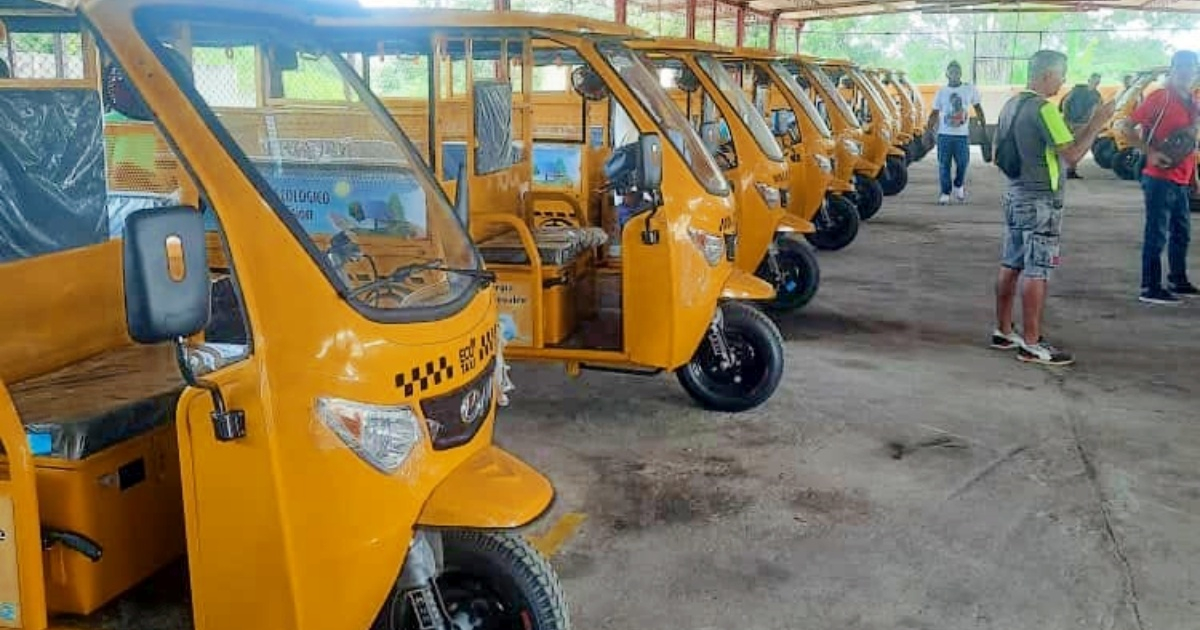In the coming weeks, around twenty electric tricycles will be introduced into public transportation systems in both Guantánamo and Santiago de Cuba. This announcement was made by Minister Eduardo Rodríguez Dávila, who specified that the fare would be 10 CUP per passenger.
Similar services are already available in Havana, Matanzas, Pinar del Río, Holguín, and the special municipality of Isla de la Juventud. "In all these regions, they have been well-received by the population. While they don't fully solve the transportation deficit, they provide a highly accepted service and generate employment, often for women," the Transport Minister noted on Facebook.
Numerous online commenters expressed gratitude for the addition of these units to public transportation but also demanded proper maintenance for their efficient operation. "For me, the most important thing, apart from the arrival of the tricycles, is the maintenance, care, and responsibility of the people who will operate these vehicles. We've received urban transport equipment several times, but within a few months, they practically disappear due to abuse and deterioration," commented one user.
Others pointed out the need to control service prices, as they often rise above the stipulated amount. "What’s needed is price control because after 15 days they start charging 200. Who will ensure that the 10 CUP per passenger fare will be adhered to? This is turning into a big business—state-run transportation with private prices," two commenters pointed out.
Some also requested reconsideration of vehicle distribution based on the population density of each region. "I don’t think Santiago de Cuba, being the most populated municipality in the country, should receive the same number of vehicles, as the demand for transportation is much higher. This is something that should be studied before allocation."
With power outages still affecting some provinces, many are questioning how these vehicles will be charged and what their operational autonomy will be. In April, Eduardo Rodríguez Dávila announced that around 200 tricycles would be delivered by 2024, expanding the service to different provinces.
According to previous statements, these vehicles can carry six passengers and have an average autonomy of 150 kilometers. Rodríguez Dávila has frequently admitted that the country is facing "one of the worst moments in recent years" in terms of public transportation.
According to the minister, Cuba used to have twice as many vehicles on the road five years ago, translating to a drop from 5.9 million passengers to 2.7 million. "This directly impacts public satisfaction because half of the routes today do not have stable service. Some buses are out of service due to technical issues, while others are grounded due to fuel shortages," he acknowledged.
Electric Tricycles in Cuba's Public Transportation
Here are some frequently asked questions about the introduction of electric tricycles in Cuba's public transportation system.
How much will the fare for electric tricycles be?
The fare for electric tricycles will be 10 CUP per passenger.
Which areas in Cuba already have electric tricycles?
Electric tricycles are already in use in Havana, Matanzas, Pinar del Río, Holguín, and the special municipality of Isla de la Juventud.
What is the average autonomy of these electric tricycles?
These electric tricycles have an average autonomy of 150 kilometers.
What are the challenges faced by Cuba's public transportation system?
Cuba's public transportation system is currently facing a shortage of vehicles and fuel, leading to unstable service routes and a significant drop in the number of passengers transported.
